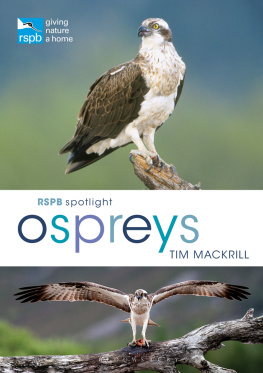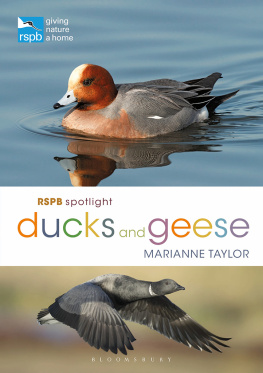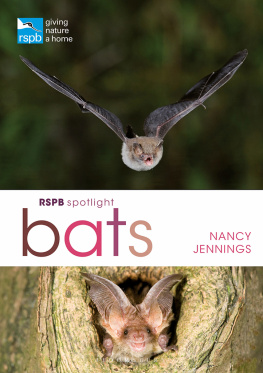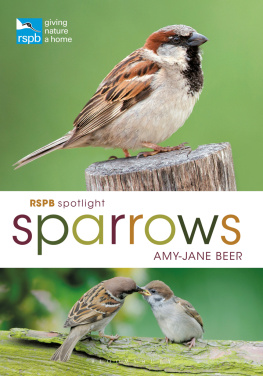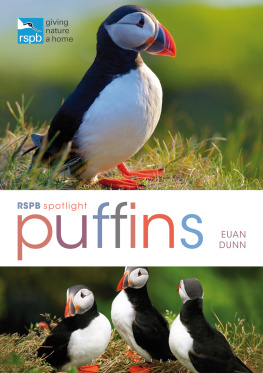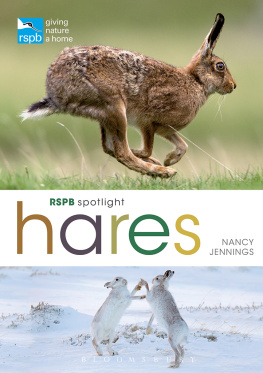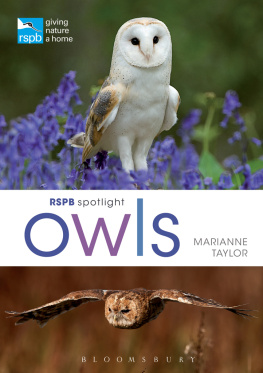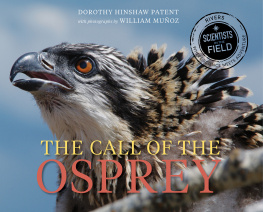
BLOOMSBURY WILDLIFE
Bloomsbury Publishing Plc
50 Bedford Square, London, WC1B 3DP, UK
This electronic edition published in 2019 by Bloomsbury Publishing Plc
BLOOMSBURY, BLOOMSBURY WILDLIFE and the Diana logo are trademarks of Bloomsbury Publishing Plc
First published in Great Britain 2019
Copyright Tim Mackrill, 2019
Copyright 2019 photographs and illustrations as credited
Tim Mackrill has asserted his right under the Copyright, Designs and Patents Act, 1988, to be identified as Author of this work
For legal purposes the constitute an extension of this copyright page
All rights reserved
You may not copy, distribute, transmit, reproduce or otherwise make available this publication (or any part of it) in any form, or by any means (including without limitation electronic, digital, optical, mechanical, photocopying, printing, recording or otherwise), without the prior written permission of the publisher. Any person who does any unauthorised act in relation to this publication may be liable to criminal prosecution and civil claims for damages.
Bloomsbury Publishing Plc does not have any control over, or responsibility for, any third-party websites referred to in this book. All internet addresses given in this book were correct at the time of going to press. The author and publisher regret any inconvenience caused if addresses have changed or sites have ceased to exist, but can accept no responsibility for any such changes
A catalogue record for this book is available from the British Library
Library of Congress Cataloguing-in-Publication data has been applied for
ISBN: 978-1-4729-5603-3 (PB)
ISBN: 978-1-4729-5602-6 (eBook)
ISBN: 978-1-4729-5604-4 (ePDF)
To find out more about our authors and their books please visit www.bloomsbury.com where you will find extracts, author interviews and details of forthcoming events, and to be the first to hear about latest releases and special offers, sign up for our newsletters.

For all items sold, Bloomsbury Publishing will donate a minimum of 2% of the publishers receipts from sales of licensed titles to RSPB Sales Ltd, the trading subsidiary of the RSPB. Subsequent sellers of this book are not commercial participators for the purpose of Part II of the Charities Act 1992.
Contents

Meet the Osprey

Ospreys catch a range of fresh and saltwater fish from on or just below the surface. Once they have a tight hold of their prey in their highly adapted talons, a series of powerful wing beats helps them get clear of the water.
The striking brown-and-white Osprey is one of the worlds most widely distributed and best-loved birds of prey, with breeding or wintering populations on every continent except Antarctica. The only bird of prey active during the day that feeds exclusively on fish, it has been revered for centuries for its hunting prowess. Northern populations are migratory, with individual birds undertaking long and perilous journeys alone to reach wintering grounds many thousands of kilometres away.
The hunting Osprey has its piercing yellow eyes fixed on ripples in the water below. Suddenly, it folds its wings and drops, arrow-like, at incredible speed. At the last moment it throws its powerful talons forward and crashes into the water. After a few seconds with its wings splayed on the waters surface, it musters the energy to take off again. A few flaps of its vast wings lift it clear of the water, revealing a fish carried head first. A mid-air shake sends a shower of water droplets downward, and then the supreme hunter powers off with its catch. There are few spectacles in the natural world as impressive or dramatic as a fishing Osprey, and if you are lucky enough to enjoy watching one at close quarters it is a sight that lives long in the memory.

Pandion haliaetus ridgwayi the subspecies of Osprey that occurs in the Caribbean has a much whiter head than its counterparts elsewhere in the world, giving it a striking appearance.
What is an Osprey?
The Osprey (Pandion haliaetus) is one of the best-known and most popular birds of prey in the United Kingdom and around the world. You can enjoy watching fishing Ospreys from North America to Australasia, and from Europe to Asia. In fact, this supreme hunter can be found on every continent except Antarctica at some point in the year.
Most northern populations of Ospreys are migratory, with individual birds making long and perilous journeys across oceans and deserts twice a year. Adult Ospreys, which may live into their twenties, often remain faithful to the same breeding and wintering sites throughout their life and, after spending the winter apart, are reunited with the same mate upon returning to their nest each spring. Whether atop a pine tree beside a remote Scottish loch, or a telegraph pole in a car park in North America, a newly returned Osprey sitting resplendent beside its nest is a sure sign that spring has arrived. It is little wonder that this bird is revered just about everywhere it occurs.

Most Ospreys from northern regions migrate south for the winter. Amazingly, juveniles undertake the perilous journey alone.
The Osprey is one of the most widely distributed species of bird on Earth. It is one of only six landbird species to occur on every continent except Antarctica during the course of the year, with many northern populations migrating south for the winter. The most northern Ospreys breed within the Arctic Circle in Finnish Lapland, while some Finnish birds have been found to migrate as far south as the southern tip of South Africa. In some places, the Osprey is referred to as a sea hawk or fish hawk, but in fact it is not a hawk at all, and instead is the only living species in the Pandionidae family. The scientific name for Osprey, Pandion haliaetus, is derived from the mythical Greek king of Athens, Pandion I, and the ancient Greek word haliaietos, hals meaning salt or the sea and aetos meaning eagle. This is a reference to the fact that the Osprey is often, but not exclusively, a bird of coastal habitats. It is the only diurnal bird of prey (in other words, active during the day) that feeds exclusively on fish, and will readily hunt along coasts and estuaries as well as in inland lakes, ponds and rivers.

Ospreys catch their prey in a range of different habitats along rivers, in inland lakes or at the coast. They then take the fish off to a favourite perch in order to eat it.

